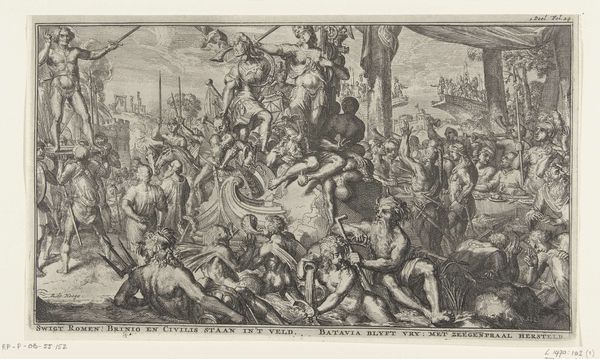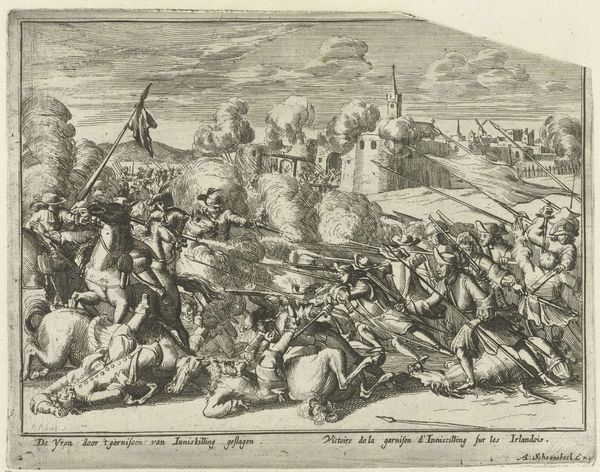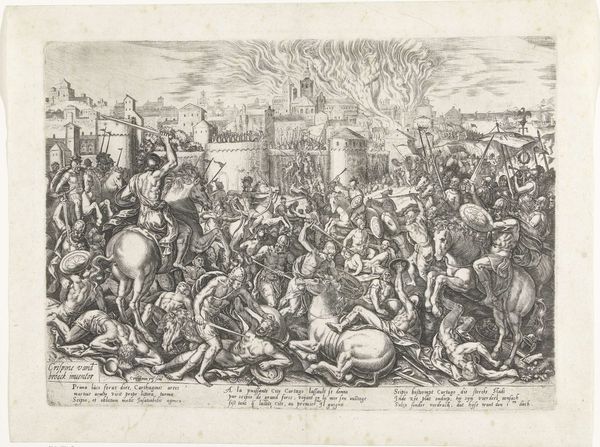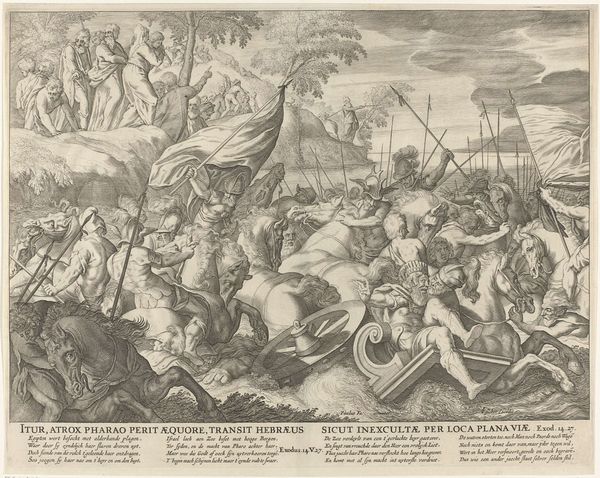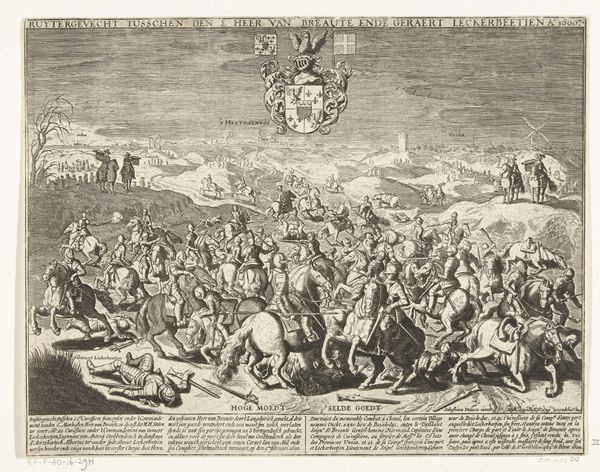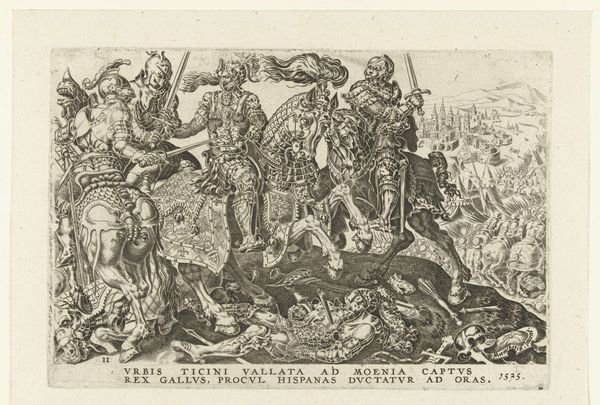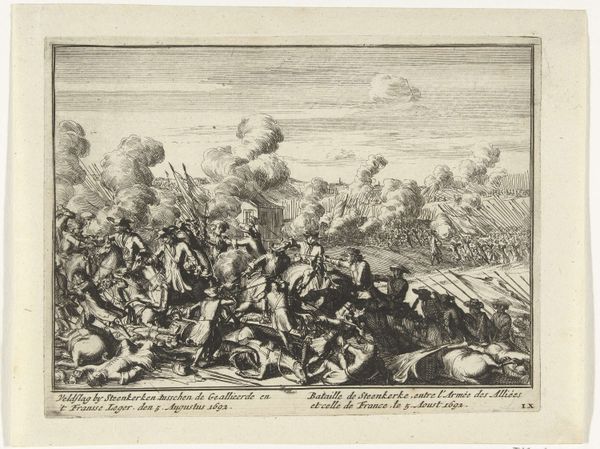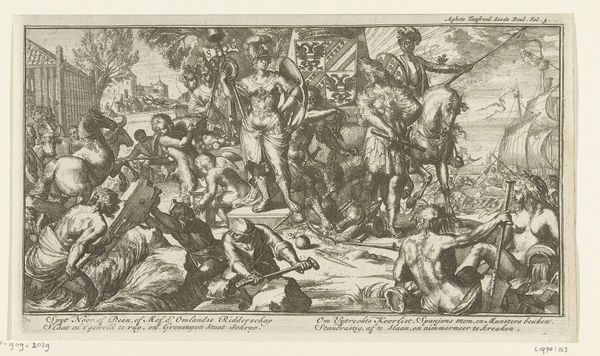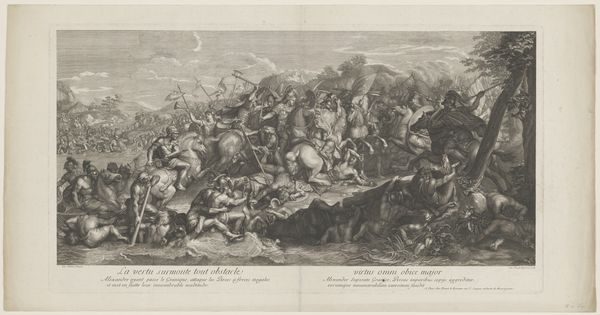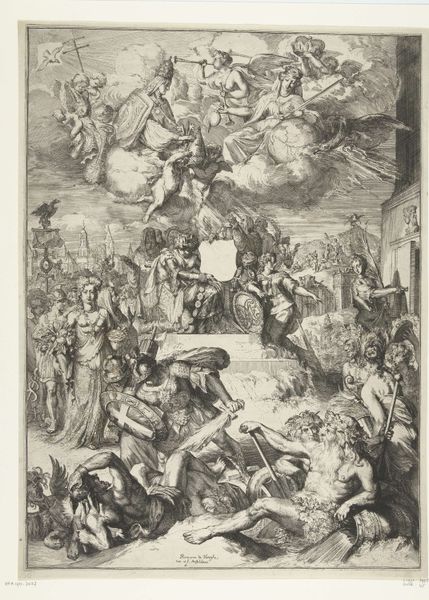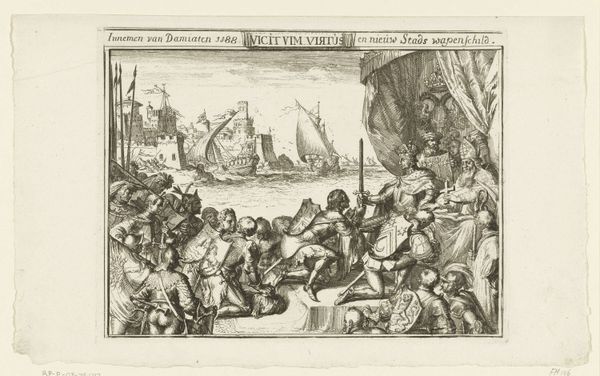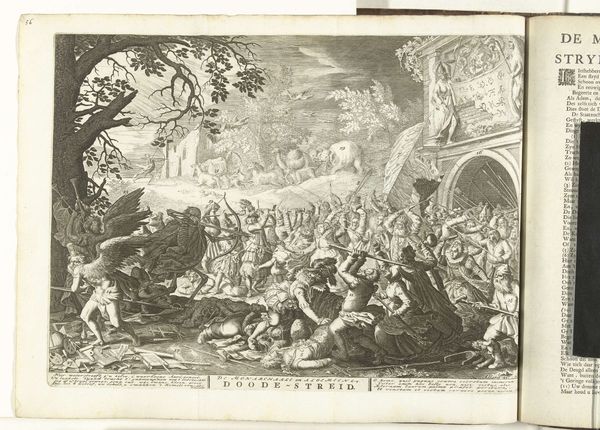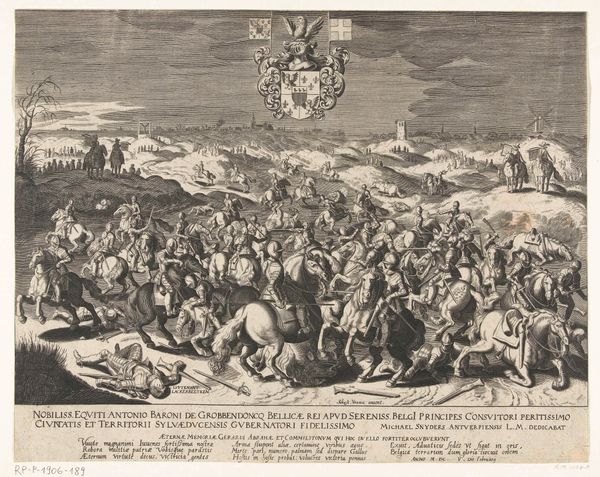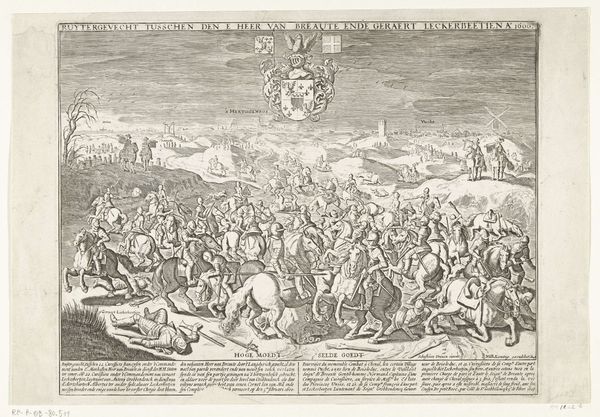
print, etching
#
narrative-art
#
baroque
# print
#
etching
#
cityscape
#
history-painting
Dimensions: height 245 mm, width 349 mm, height 302 mm, width 376 mm
Copyright: Rijks Museum: Open Domain
Curator: Romeyn de Hooghe's "Gevangenneming van prins Wilhelm von Fürstenberg, 1674," etched in that same year, depicts a pivotal moment in 17th-century political upheaval. I'm always drawn to De Hooghe's knack for narrative. What strikes you immediately? Editor: The composition's really dynamic. I’m seeing clear depictions of labor in wartime; all of that must be extremely costly both financially and physically. This is etching, so we know it involved skilled craftspeople meticulously working with metal, with a pretty large scale format and that impacts the kind of viewer it would reach. Curator: Absolutely. The social and political implications of printmaking allowed De Hooghe to circulate a very specific account of this historical event to a broad audience. Here, we see Prince Wilhelm's capture during the Franco-Dutch War. Considering Fürstenberg’s powerful religious identity, I am struck by how this moment was crafted for viewers. Editor: It is also an interesting mix of realism and symbolic representation. Notice how De Hooghe meticulously details the clash of bodies. So much suffering is here, it looks physically taxing to fight and struggle like these humans and animals clearly do. Curator: His use of imagery invites viewers to consider their allegiances during the conflict. It is clearly not a glorification of war, I mean there are dead bodies right there in front of you! But do you think that De Hooghe presents this from a place of trauma or judgement? Editor: That is complex because from a materials perspective prints were designed to influence public perception. This makes me think critically about the networks involved in circulating these images and laboring for the powers at be. We are thinking about craft, circulation, labor, all of it wrapped together in how images inform popular sentiment about class and war. Curator: I am struck again by its power to invite dialogue, as it did centuries ago. Editor: Yes, this etching provides much for contemporary analysis, doesn't it? I was compelled by its materials and methods of distribution and what that can show us about who consumes visual imagery and labor today.
Comments
No comments
Be the first to comment and join the conversation on the ultimate creative platform.
